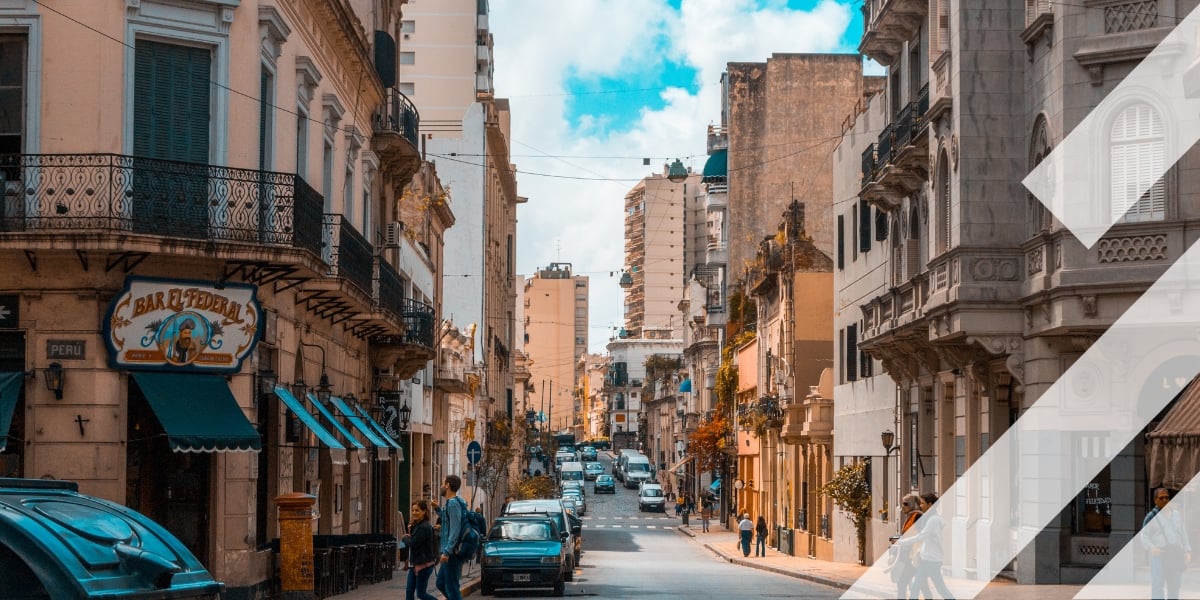Towards sustainable urban mobility with multi-modal and policy-responsive traffic management
Intertraffic spoke to Polis’s Suzanne Hoadley, one of Europe’s most respected and experienced sustainable urban mobility experts, about how multimodality, in addition to political will, could well be the key to ensuring decades of critical thinking is put into practice.
Sustainable Urban Mobility Plan (SUMP)
Intertraffic (I): Sustainability has long been a thorny issue in the transport community. Have there been any seismic shifts in how cities are dealing with what is undoubtedly a sensitive topic?
Suzanne Hoadley (SH): “With the aim of creating more liveable and accessible cities, sustainable modes (walking, cycling and public transport) are being prioritised in transport policy and planning. This is leading to infrastructure changes to provide more space for active modes (walking and cycling) and public transport, investments in high capacity and shared transport services and improved integration of these modes as well as speed limit reductions to make it safer for pedestrians and cyclists. Conversely, cars and motorised vehicles more generally are becoming the subject of greater restrictions through demand management measures such as parking regulation and access restrictions.”
“Such measures are increasingly being decided through the strategic and integrated planning approach offered by the Sustainable Urban Mobility Plan process, otherwise known as SUMP, which more and more European cities are adopting. This transport planning model emphasises the involvement of citizens and stakeholders, the coordination of policies between sectors, broad cooperation across different layers of government and with private players and the systematic monitoring and evaluation of the plan’s implementation.”
“The SUMP is distinguished from traditional transport planning in many ways, not least in terms of goal setting – improving the quality of life of people rather than improving traffic flow - and the shift towards sustainable modes.”
Smart sustainable traffic management
I: We will shortly be publishing a series of articles in which we talk to six of the smartest cities in the world based entirely on their traffic management operations. What does it take for traffic management operations to be sustainable as well as smart?
SH: “The role of traffic management in supporting SUMP goals is an area that has been little researched. The main purpose of traffic management is to keep traffic flowing, to minimise vehicle delay and to mitigate the traffic impacts of events, such as roadworks and accidents. The traffic signal is the most important tool that an urban traffic manager has to influence vehicle movements. Traffic signal strategies are typically designed to optimise the throughput of vehicles at junctions, irrespective of what that vehicle is and what it is carrying.”
“The vehicle-centricity of traffic management puts it at odds with today’s city transport strategies that are focusing on the efficient movement of people and goods and are prioritising sustainable modes. This misalignment was a frequent observation by city and regional authorities in the Polis Traffic Efficiency Working Group, including the former Working Group chair Michael Aherne (head of development at Ireland’s National Transport Authority) who often expressed frustration that traffic management was not evolving in line with changing policy priorities that promoted active modes and public transport. This hinted at the need for traffic management to become multimodal, hence the term ‘multimodal traffic management’ was coined and became a work area within the group in 2017 and 2018.”
I: Has the public transport sector perhaps been a little more successful in that sphere, or has it just been a lot more smart in how it has marketed itself?
SH: “To be fair, there have been developments in the public transport field, specifically related to the roll-out of bus and tram priority at traffic lights and automatic vehicle location systems providing real-time information about the location of public transport vehicles. However, there has been very little on offer for cyclists and pedestrians, which have been largely ignored in traffic management terms, at least until recently. The last few years have seen a growth in the demand for dedicated traffic signals for cyclists to make cycling more efficient and safer and to complement the rapidly expanding bike networks taking over city roads.”
“There have also been some interesting and very recent developments for pedestrians, although they are yet to be widely deployed. These include systems based on pedestrian detection technology that can extend the green person (crossing permission) at signalised crossings to accommodate slow moving or high pedestrian flows. But the most exciting development to date in my opinion is the introduction of pedestrian priority at selected signalised crossings, as announced a few months ago by Transport for London as part of its walking strategy. Signalised crossings will be de facto set on the green person and will only change as approaching traffic is detected. Together, these developments suggest a shift in paradigm towards traffic management that is multimodal and takes account of the changing modal hierarchy.”
Multimodal traffic management
I: If cities have ideas to become more sustainable, from a transport point of view, how do they go about kicking that off? Where can examples of cities be found?
SH: “Several Dutch organisations, including Polis members Groningen, Utrecht province and municipality, CROW, Rotterdam, Noord Brabant and Amsterdam, have actually joined forces to create guidelines for the design of a multimodal network management vision. Implementing such a vision is not always plain sailing. Discussions within the Polis Traffic Efficiency Working Group revealed that political will and public acceptance are important. In some cities, there has been a citizens’ movement against bike lanes. Another city cited the issue of car queues at traffic lights being for more visible than bike queues.”
“Besides technology and political courage, the implementation of multimodal traffic management also requires data about the flow of all modes. Today, we know a lot about the motorised vehicles moving on our road networks in real-time, thanks to the many road-side systems installed (loops, Bluetooth trackers, radars, etc) or floating vehicle data acquired from third parties. The same cannot be said about pedestrians, cyclists and public transport users, whose flows are poorly understood. The absence or, at best, limited and fragmented sets of data mean that cities today still mainly rely on census data or data from travel surveys (which are limited in participant size and frequency) for mobility planning purposes and/or for building their transport/travel demand models.”
Collecting data on traffic flows
I: Why is this the case? It’s the final month of the third quarter of 2021!
SH: “One important reason for this situation is the limited availability of commercial solutions in what is still a young market. This market situation was a trigger for the Brussels Region to engage in a pre-commercial procurement process for a pedestrian flow monitoring system. Amsterdam is another city that has built up capability to monitor and manage the flow of people, particularly in crowded situations, through its Crowd Monitoring System Amsterdam (CMSA), which relies on camera counts and WiFi data. Transport for London similarly makes use of data collected from the free public WiFi to understand how passengers move around on the London Underground.”
“There is no doubt that the demand for data about cycling, walking and public transport passenger flows will continue to grow. To these modes can be added newer forms of mobility entering the street domain, such as eScooters. The impact of the pandemic on the way in which we travel, particularly the growth in walking and cycling, is only adding to the impetus for more and better data. This trend is giving rise to debates about data privacy since much of the data is directly or indirectly linked to an individual or an individual trip. This has been a cause for concern around the world, not least in the US where there has been some resistance from service providers to share data with governments but also in the EU, including the recent example of a Dutch court fining a municipality for monitoring people movements through the free public WiFi.”
I: In the case of cities transforming their approaches to take advantage of sustainability plans, has the thirst for data actually been a hindrance?
SH: “According to some research I have recently been involved in for a European Investment Bank study on mobility data acquisition by public authorities (to be published), perceived conflicts with data privacy legislation is leading city authorities to err on the side of caution in acquiring data from external sources. This comes at a time when the EU has adopted an ambitious data strategy promoting more data sharing between the public and private sector and the research community.”
“In my opinion, there is a need for an analysis of the application of the horizontal piece of legislation that is GDPR to the vertical and data-rich sector of mobility.”
Suzanne Hoadley is Senior Manager, Traffic Efficiency Coordinator, at Polis.
On air episode 5: Sustainable urban mobility
Do you want to know more on the European Green Deal and Sustainable Urban Mobility? We spoke to experts such as Lucas Harms (Dutch Cycling Embassy), Peter Kuhn (MaaS Global) and Pieter Litjens (CROW) in the 5th episode of On Air in September. Did you miss it? Watch it here >
Share your story
Do you have an innovation, research results or an other interesting topic you would like to share with the professionals in the infrastructure, traffic management, safety, smart mobility and parking industry? The Intertraffic website and social media channels are a great platform to showcase your stories!
Please contact our Sr Brand Marketing Manager Carola Jansen-Young.
Are you an Intertraffic exhibitor?
Make sure you add your latest press releases to your Company Profile in the Exhibitor Portal for free exposure.
Get up to speed on the mobility industry - our newsletter straight to your inbox!








